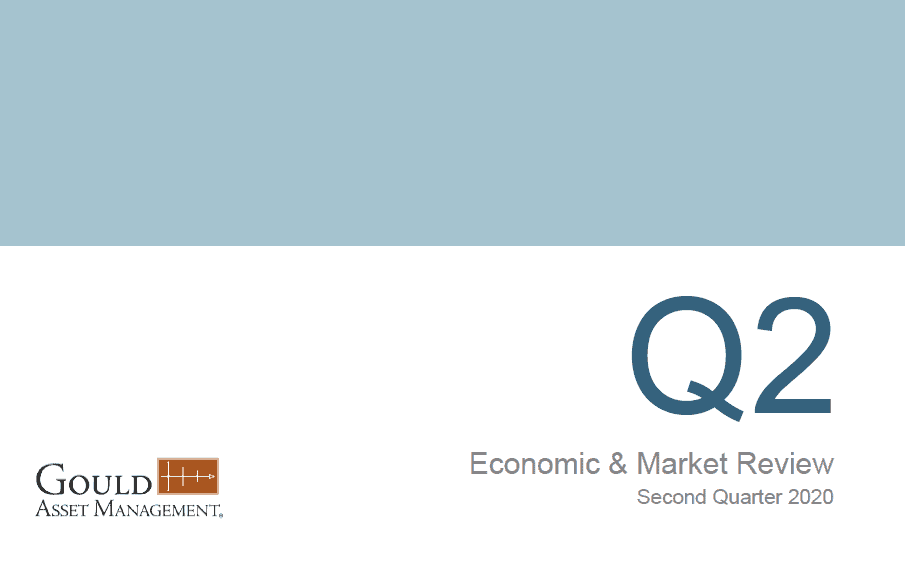by The Gould Asset Management Team
Note: This post is an excerpt from Gould Asset Management’s Economic and Market Review for the Second Quarter of 2020. The excerpt is posted here for the benefit of our blog subscribers.
Stocks Rally on Massive Government Stimulus and Attempts to Reopen Economies Amid Pandemic
Markets staged a dramatic comeback in the second quarter despite massive economic dislocation amid the continued spread of Covid. Aggressive fiscal and monetary stimulus landed with intended effect and economies cautiously began reopening.
In the US, large cap stocks (S&P 500) soared 20.5% on the quarter. It was the index’s best quarterly return in over two decades and put year-to-date losses for US stocks at a modest 3.1% through June.The sharp recovery caught many investors by surprise considering Covid cases continue to rise, unemployment is at historic levels, and many economic uncertainties remain.
Mid and small cap US stocks outperformed large caps on the quarter, rising 30.4%. They had more to recoup, however, and still lag large-caps year-to-date, having declined 6.0% in 2020.
The stock market’s recovery was relatively robust, with all US sectors rising. Consumer discretionary (up 30.7%) and technology (up 30.5%) were the two best performing sectors. Tech stocks have been remarkably resilient in the face of the pandemic, with the sector up 15.0% year-to-date, continuing a multi-year trend of outperformance by the sector.
International developed stocks (up 15.1%) and emerging markets (up 18.2%) also staged recoveries but fell short of the surge seen in US equities. Year-to-date the discrepancy is even more pronounced, with developed stocks falling 11.1% and emerging markets down 9.7%.With the virus generally better contained abroad than at home, it will be interesting to see if international stocks can outperform for some period.
The market’s rise coincided with a drop in volatility. The VIX volatility index started the quarter in the stratosphere (above 50) and ended at about 30. VIX is still about 50% above its historical average, which is understandable in light of the concurrent health and economic crises.
To continue reading, please see our entire Economic and Market Review.

